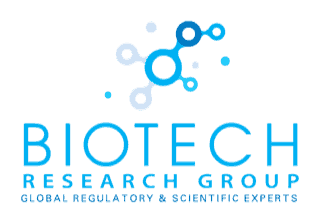The U.S. Food and Drug Administration (FDA) has the authority over the market entrance of medical devices. This includes the determination of whether devices are safe and effective. The classifications, pathways, and submissions associated with medical devices are quite different than those provided for pharmaceutical products. This includes 510 k premarket notification.
FDA classifies devices into three classes, based upon their potential risk and the regulatory controls required for the device. Class I devices pose the least risk to the public and for which safety and effectiveness are addressed with General Controls. Such controls include maintaining proper Quality System Regulations (QSR) adherence, facility registration, product listing, reporting of adverse events, and other basic requirements. These devices usually do not require specific FDA clearances (510(k)) or approvals (Premarket Approval (PMA)) to bring the product to market. Class II devices are considered to pose intermediate risks and generally require premarket clearance by FDA 510(k) submissions. Class II device manufacturers may be required to conform to certain performance standards, FDA Guidances, specific labeling, tracking, etc. as well as general controls. FDA clearance requires that a Class II product submitted pursuant to the 510(k) procedure be shown to be substantially equivalent (SE) to its predicate device. Class III devices present the greatest risk to the public and may include life-sustaining devices, life support measures and permanent devices. These products must conform to general controls and must be specifically approved prior to marketing through the PMA process, often including clinical trial data to support that the device is safe and effective.
In contrast to the PMA approval process, FDA requires that a product marketed via the 510(k) process demonstrate substantial equivalence to a predicate device or devices. A predicate device is a legally U.S. marketed device not subject to a PMA. For a new device to be deemed SE, it must be at least as safe and effective as the predicate. An SE product is determined to have the same intended use as its predicate and may or may not have the same technological characteristics as its predicate.
The 510(k) process does not include a finding by the FDA that a medical device is safe and effective. Rather, the 510(k) process is focused on a determination that the proposed medical device:
- is SE to a product already on the market
- does not raise new questions of safety and effectiveness
- is at least as safe and effective as the legally marketed device
FDA evaluates the commercial manufacturing and control procedures developed, validated, and maintained by sponsors to ensure that these 510(k) products comply with current Good Manufacturing Practices (GMP) and QSRs. Manufacturers must comply with GMPs and QSRs at launch and throughout the commercial lifecycle of their devices. For many medical devices, the 510k submission is the appropriate pathway to the marketplace in the U.S. Knowledgeable and experienced 510k consultants, such as those at BRG, can guide companies/sponsors through the process and manage all submissions to FDA. Additionally, BRG can perform all post-clearance regulatory activity and FDA interactions needed for any of your device products.
Types of 510k Submission Methods
Traditional 510k: Most companies introducing a new Class II device must submit a Traditional 510k Premarket Notification. This is a full submission with 21 sections. FDA’s clearance of a Traditional 510k is 90 days.
Special 510k: This clearance is used when there is a design change or a modification to a device you have previously cleared that does not affect the intended use. FDA’s clearance of a Special 510k is 30 days.
Abbreviated 510k: There are specific guidelines for this 510k clearance. There has to be guidance documents from FDA for the specific medical device that is to be cleared. A special control has been established by FDA for this device and consensus standards. FDA’s clearance of an Abbreviated 510k is 90 days.
BRG will provide the required information about your new medical device that we match up to a device that has already been cleared by FDA. The device that we match your device to is called a predicate device. We have to prove to FDA the substantial equivalence of your device to the one they cleared.
What is Substantial Equivalence?
This is the method to prove to FDA that your new device is at least as safe and effective as the predicate device.
A device is substantially equivalent if, in comparison to a predicate it:
• has the same intended use as the predicate; and
• has the same technological characteristics as the predicate;
or
• has the same intended use as the predicate; and
• has different technological characteristics and the information submitted to FDA;
– does not raise new questions of safety and effectiveness; and
– demonstrates that the device is at least as safe and effective as the legally marketed device.
This does not mean that the devices must be identical. BRG will establish the equivalence with respect to intended use, design, energy used or delivered, materials, chemical composition, manufacturing process, performance, safety, effectiveness, labeling, biocompatibility, standards, and other characteristics, as applicable.
BRG will guide you through this process to gather all of the above data that applies to your medical device. We have a list of the documents that are needed for your specific device. We review the predicate together and then set a plan in motion for your new medical device.


